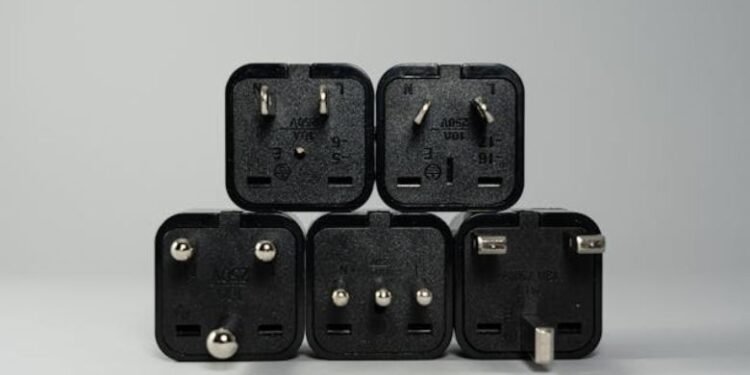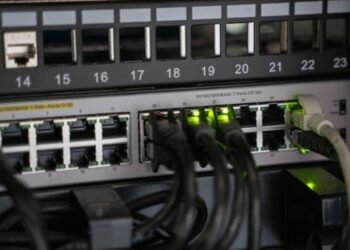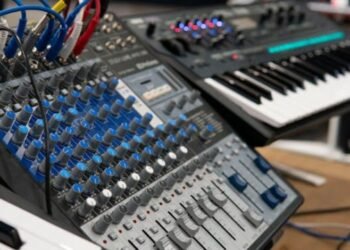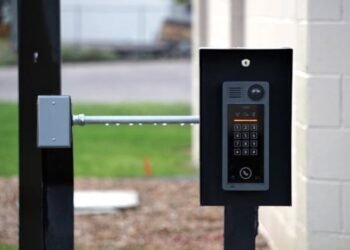Wondering Can I Plug a Surge Protector Into Another Surge Protector? Discover risks… tips and safer ways to expand your outlets.
I’ll be honest…I’ve been there. You’ve got a desk full of gadgets… multiple chargers… a gaming PC… a printer… maybe even a mini fridge sneaking under the table. You look at your single wall outlet and think… “I wish I had more outlets… Can I plug a surge protector into another surge protector?”
In this post… we’ll explore everything you need to know about daisy-chaining surge protectors… the hidden risks… technical nuances… real-world consequences and safer alternatives. And while it’s a different category than Privacy screen protectors, the same principle applies: protection matters. By the end… you’ll know exactly why the answer is usually no and how to safely expand your power setup without frying your electronics or your home.
Quick Answer
If you’re looking for a straight answer: you generally should not plug a surge protector into another surge protector. While it seems convenient… daisy-chaining these devices introduces safety hazards… can reduce their effectiveness… and may even void warranties or violate electrical codes.
Think of it like stacking multiple fire extinguishers on top of each other and expecting double protection…sounds clever… but it doesn’t work that way.
Why Daisy-Chaining Surge Protectors Is Risky
Let’s dive deeper. I’ve learned the hard way that understanding the why behind the rules is just as important as following them.
Reduced Protection Effectiveness
Surge protectors rely on components called Metal Oxide Varistors (MOVs) to clamp voltage spikes and protect your devices. When you plug one protector into another… the MOVs don’t magically double the protection. In fact… the first protector often takes the full brunt of a surge… leaving the second one with little or no extra defense.
I once plugged my gaming setup into two stacked surge protectors… thinking I was “super-protected.” When a small lightning storm hit my neighborhood… the second protector didn’t really add protection…it was just along for the ride. The first device absorbed almost everything.
Load… Overheating and Overcurrent Risk
Every surge protector has a rating for how much current it can safely handle. Daisy-chaining increases the risk of exceeding these limits… especially if multiple devices are plugged in. Each extra cord… connector… or length of wiring adds resistance… which can create heat. And heat… my friends… is the silent enemy of electronics.
Imagine trying to drink water through two long… narrow straws at the same time…you’ll get some water… but you’re making it harder on the system. That’s similar to what happens inside chained surge protectors: resistance increases… cords heat up… and your devices may be at risk.
High-draw devices like space heaters… microwaves… or compressors are especially risky. They can push the current over the limit… creating fire hazards even if everything seems fine initially.
Surge Protector Degradation and Hidden Failures
Here’s something not everyone talks about: MOVs degrade over time. Every time they clamp a surge… their capacity diminishes. Many surge protectors have indicator lights to show if the protection is still active… but when you chain devices… These indicators can be misleading.
The upstream protector might be taking all the stress… while the downstream one appears fine. You think your devices are safe… but in reality… the protection is compromised. I learned this the hard way when my first chained surge protector silently failed during a minor storm…luckily… the second one did some last-minute saving… but it was a close call.
Grounding and Surge Current Path
Another subtle factor is grounding. Surge protectors need a low-impedance ground path to work effectively. Chaining multiple devices adds extra connections… which can increase impedance and reduce surge-diversion efficiency. A surge may find alternate paths… potentially through your devices… causing damage.
It’s like building a maze for electricity: the longer and more complicated the path… the more likely something will go wrong.
Regulatory and Warranty Concerns
Many surge protector manufacturers explicitly warn against chaining. UL (Underwriters Laboratories) standards… NEC codes… and OSHA safety guidelines all discourage daisy-chaining. Using devices in this way can void warranties and even impact insurance claims if a fire or equipment damage occurs.
I remember reading the fine print for a popular surge protector I own…“Plug directly into a wall outlet. Do not daisy-chain.” I had ignored it once. Lesson learned.
Lesser-Known or Unique Risks
Most articles stop at “it’s unsafe… ” but there’s more to consider.Can I Plug a Surge Protector Into Another Surge Protector?
- Added resistance and heat: Extra cord length and multiple connections increase resistance… which can reduce the effectiveness of internal fuses or breakers.
- Hidden heat sources: Chains under desks… behind furniture… or under carpets can go unnoticed… creating potential fire hazards.
- Interaction of protective devices: MOVs and breakers in chained units may interfere with each other… causing slower fault clearing or incomplete surge clamping.
- False sense of capacity: You might think you can plug more devices safely… but the wall circuit still has a fixed capacity. Overloading is easier than you realize.
Real-World Anecdotes
To make this more relatable… here’s my personal journey:
I once tried to connect a surge protector to another to power my home office… thinking… “Why not?” One afternoon… a minor lightning storm caused the first protector to absorb most of the surge. The second one was barely affected… but the first device smelled faintly burnt…nothing caught fire… thankfully… but it was a wake-up call. From that day on… I’ve always plugged my protectors directly into the wall.
It’s easy to think this is overkill… but the small risks accumulate…heat… degradation… grounding issues and potential insurance nightmares.
Safe Alternatives and Best Practices
So… if the answer to “can i plug a surge protector into another surge protector” is no… what’s the safe way to expand outlets? Here’s what I recommend:Can I Plug a Surge Protector Into Another Surge Protector?
- Plug directly into a wall outlet: This is always the safest.
- Use a single… high-quality surge protector: Choose one with enough outlets… a thick cord… and a high joule rating.
- Avoid high-draw devices on protectors: Space heaters… microwaves… or large gaming PCs should go directly into the wall.
- Consider installing more outlets: If you need more plugs… a licensed electrician can safely add permanent outlets.
- Regularly inspect cords and connectors: Heat… discoloration… or unusual smells are warning signs.
- Check certification: Make sure your protector has UL… ETL… or equivalent certification and a visible protection indicator.
FAQs
Can I plug a power strip into a surge protector?
Technically possible… but still not recommended. You’re essentially daisy-chaining… which introduces the same risks.
Will daisy-chaining void my warranty?
Yes. Most surge protector manufacturers explicitly warn against it.
Can multiple protectors protect my expensive devices better?
No. Chaining does not double protection. The first protector usually absorbs most of the surge.
What’s the safest way to expand outlets?
Use a single high-quality surge protector or install permanent outlets through a licensed electrician.
Key Takings:
- So… Can you plug a surge protector into another surge protector? The informed answer is: don’t do it.
- It reduces protection effectiveness… increases fire risk… may void warranties and can cause insurance or compliance issues.
- Instead… use a single high-quality protector… plug directly into the wall and avoid high-draw devices.
- Inspect your setup regularly… and if you need more outlets… consider permanent solutions.
- Trust me… after learning this the hard way… a little extra planning now can prevent big headaches later.
- Remember: daisy-chaining might seem convenient… but when it comes to protecting your devices…and your home…it’s rarely worth the risk.
Additional Resources:
- Electrical Fire Safety and Relocatable Power Taps — NFPA: Explains that power taps (power strips/surge protectors) must be plugged into permanent receptacles and that daisy-chaining is a code violation inspectors remove.
- Relocatable Power Taps — Underwriters Laboratories (UL) guidance/pdf: UL’s manufacturer/standards guidance states RPTs (power taps) are not intended to be series-connected (daisy-chained) to other RPTs or extension cords.
















